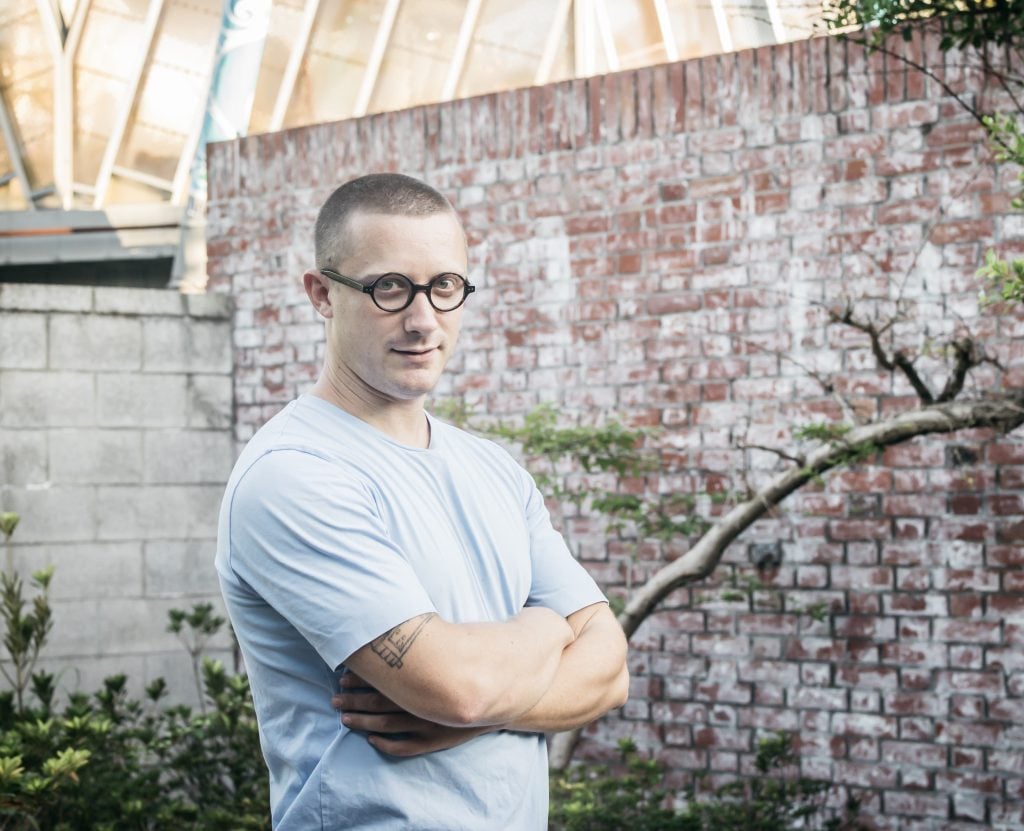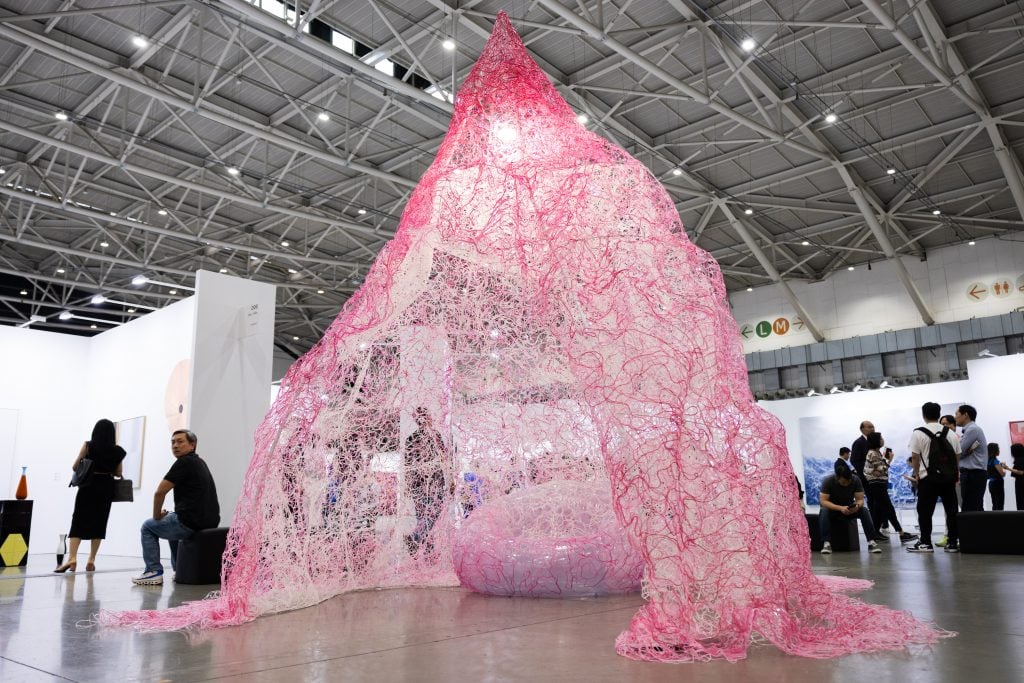Market
What’s New in Taiwan’s Art World? Fair Director Robin Peckham Offers an Insider’s Look
A new generation of young collectors is rising, but the market and audience have become 'much more fragmented,' the Taipei Dangdai co-leader says.

A new generation of young collectors is rising, but the market and audience have become 'much more fragmented,' the Taipei Dangdai co-leader says.

Robin Peckham

The View From is excerpted from The Asia Pivot, Artnet Pro’s biweekly members-only newsletter providing mission-critical analysis, insights, and exclusive intelligence on developments in Asia’s art markets, with a focus on business opportunities and challenges. Subscribe here to receive it directly to your inbox.
Robin Peckham is the co-director of Taipei Dangdai Art and Ideas, which runs through Sunday, May 12, at the Taipei Nangang Exhibition Center. He was previously the editor-in-chief of Leap magazine and has curated a number of notable exhibitions at institutions such as the UCCA Center for Contemporary Art, the Fosun Foundation, the M Woods Museum, and the K11 Art Foundation.
This year marks my 20th anniversary of living in Asia, and it’s been exactly five years since I moved to Taipei to become the co-director of Taipei Dangdai, which means it’s also the longest I’ve lived in one city continuously since I was 10 years old. Obviously, the big story of the last five years has been Covid, with everything falling apart and coming back together. But it doesn’t necessarily come back together in the same ways as it was happening beforehand.
This is going to be my fourth edition of Taipei Dangdai (we skipped 2021). If you look at the development of Dangdai, the Asian art market, or even the art world in general, we are sort of in a similar place to where we were in 2019 and 2020.
One significant change in Taiwan’s art world compared to five years ago is the rise of young collectors, which is one of the reasons we founded the fair. The next generation is taking over this massive generational transfer of wealth and older collectors are becoming much more willing to hand things over.
Another major change is that the market is much more fragmented, and so is the audience. People don’t travel the way they used to. There’s no longer any sense that you must be at a fair, or a biennial, or this big museum opening. A lot of that is connected to Covid restrictions, and then coming out of the pandemic, people are traveling more purely for recreational reasons. So, now when people travel for a fair, they spend less time at it and more time enjoying the city.

Installation view, Taipei Dangdai 2024. Courtesy of Taipei Dangdai.
That supports part of our original thesis for the fair, which was that the market would be more fragmented, and that we needed to serve regional sectors like Taiwan by going deep into them, rather than by trying to pull people out into bigger, more globalized places. We are offering a new series of VIP packages this year to people from other parts of Asia, so they can spend a day or two before or after the fair getting behind the scenes, looking at museums, getting to visit artists, estates, old studios, as well as seeing the nature of Taiwan, such as the north coast or Yangmingshan.
Another major transformation is in how the private sector and the public sector work with each other. Traditionally, in Taiwan, they’ve been quite separate. The public sector has a very educational mission and a very civic mission. Those in the private sector have been very discreet and not wanting to kind of flaunt their collecting, very different to the way it works in China or Korea.
We’re starting to see some changes in that in Taiwan. You have some smaller foundations that have been open for a few years now. This month sees the opening of the Fubon Art Museum. The Fubon Group is among some of the biggest collectors in Taiwan. The fact that they are doing something so public with their collection and with art will change how people think about the private sector, encouraging a lot more collectors to be more open and feel the weight of responsibility of what it means to build educational programs for the public and offering public access. Another good example is the exhibition of the collection from Pierre Chen’s Yageo Foundation, which will be traveling back to Taiwan’s Kaohsiung Museum of Fine Arts in June after the Tate Modern exhibition “Capturing the Moment.”
I would expect that we will see more people this year than in the past couple of years. We have embedded with the local community in Taiwan, including the galleries, government, and non-profits. For the first time this year, we are co-presenting a special non-profit exhibition with the Ministry of Culture, showcasing mid-career Taiwanese artists and artists based in Taiwan, curated by four curators from here and abroad.
Taiwan plays an interesting role in the broader Asian market. While we’ve seen a lot of softness in the mainland Chinese market, there is a palpable sense of Taiwanese collectors stepping up to take up some of that slack. Taiwanese collectors also want to be good hosts.
—As told to Vivienne Chow. This article was originally published in The Asia Pivot on May 1, 2024.